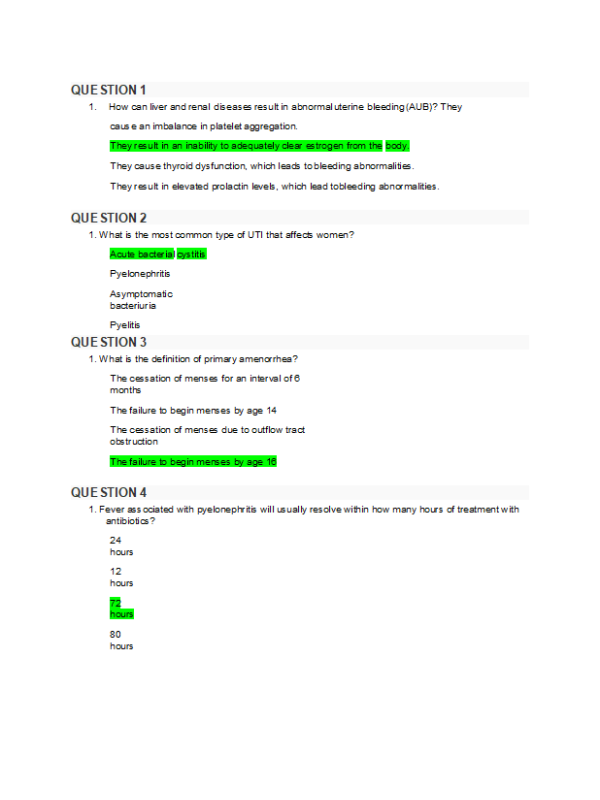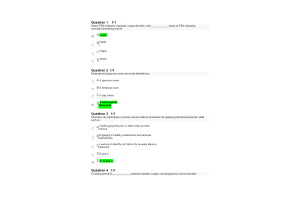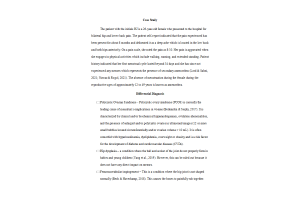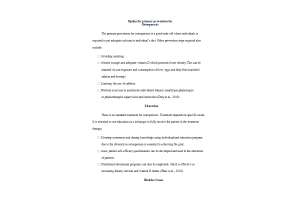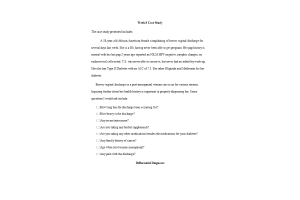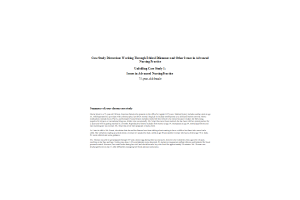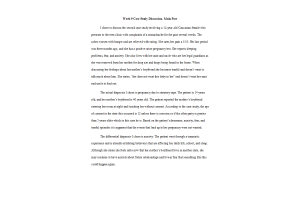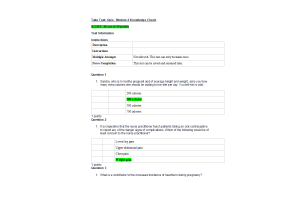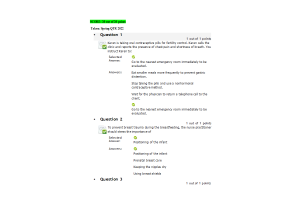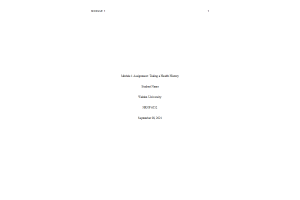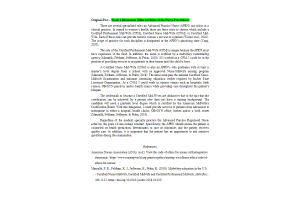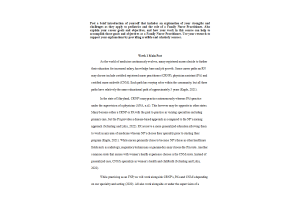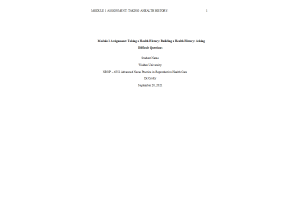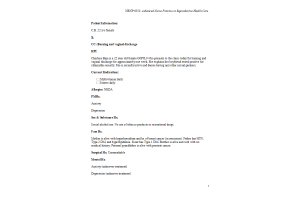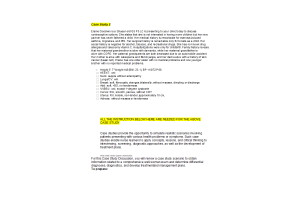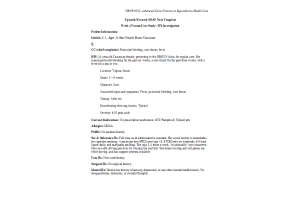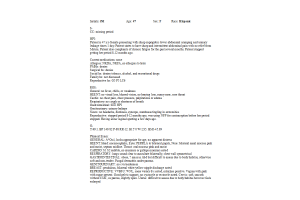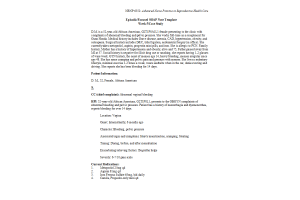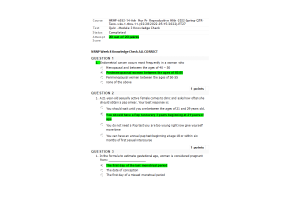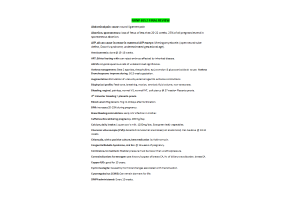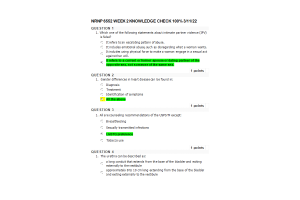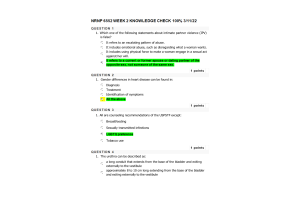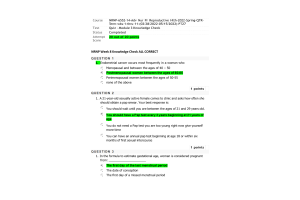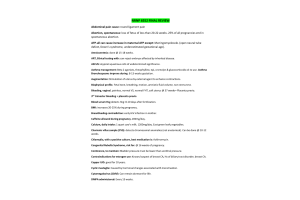NRNP 6552 Week 5 Knowledge Check (Module 2)
- $25.00
1.Question: How can liver and renal diseases result in abnormal uterine bleeding (AUB)? They cause an imbalance in platelet aggregation.
2.Question: What is the most common type of UTI that affects women?
3.Question: What is the definition of primary amenorrhea?
4.Question: Fever associated with pyelonephritis will usually resolve within how many hours of treatment with antibiotics?
5.Question: What is the best definition of abnormal uterine bleeding (AUB)? Uterine bleeding for which no pelvic pathology is found
6.Question: If a woman is diagnosed with HSV 2. What other STIs test/s should be done for this female patient?
7.Question: How is secondary dysmenorrhea defined?
8.Question: What has changed in terms of recommended antibiotic treatment for uncomplicated lower UTIs?
9.Question: The incidence of uterine fibroids: Increases with age
10.Question: Why do adolescents have the highest risk of developing pelvic inflammatory disease (PID)?
11.Question: What can bacterial vaginosis lead to?
12.Question: Tubal sterilization for women who have completed their families is highly effective, but there are disadvantages such as:
13.Question: Acyclovir should be avoided in patients with preexisting HSV 2
14.Question: Which contraceptive methods have inherent failure rates?
15.Question: A first-line recommended treatment for women with polycystic ovary syndrome (PCOS) is:
16.Question: Genital HPV infection is very common and can be transmitted through: vaginal
17.Question: Menstrual cycle usually occurs around what age for girls?
18.Question: Why shouldn’t symptoms such as bloating, and breast tenderness be considered disordered perimenstrual symptoms?
19.Question: The second most commonly reported STI is:
20.Question: What is a common vasomotor symptom of menopause?
